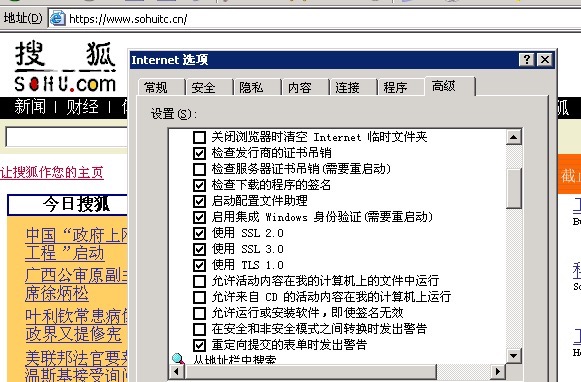lvs 需要配置下内核参数,否则会发生抢VIP断流之类的异常情况,本文档主要介绍DR模式下
首先是LVS 前端,需要设置两个参数arp_ignore和arp_announce
echo "0" >/proc/sys/net/ipv4/conf/lo/arp_ignore
echo "0" >/proc/sys/net/ipv4/conf/lo/arp_announce
echo "0" >/proc/sys/net/ipv4/conf/all/arp_ignore
echo "0" >/proc/sys/net/ipv4/conf/all/arp_announce
而后端的节点,也需要设置对应的参数
echo "1" >/proc/sys/net/ipv4/conf/lo/arp_ignore
echo "2" >/proc/sys/net/ipv4/conf/lo/arp_announce
echo "1" >/proc/sys/net/ipv4/conf/all/arp_ignore
echo "2" >/proc/sys/net/ipv4/conf/all/arp_announce
这里解释下这两个参数的含义:
arp_ignore - INTEGER
Define different modes for sending replies in response to
received ARP requests that resolve local target IP addresses:
0 - (default): reply for any local target IP address, configured
on any interface
1 - reply only if the target IP address is local address
configured on the incoming interface
2 - reply only if the target IP address is local address
configured on the incoming interface and both with the
sender's IP address are part from same subnet on this interface
3 - do not reply for local addresses configured with scope host,
only resolutions for global and link addresses are replied
4-7 - reserved
8 - do not reply for all local addresses
The max value from conf/{all,interface}/arp_ignore is used
when ARP request is received on the {interface}
简单翻译下:
arp_ignore:定义对目标地址为本地IP的ARP询问不同的应答模式0
0 – (默认值): 回应任何网络接口上对任何本地IP地址的arp查询请求
1 – 只回答目标IP地址是来访网络接口本地地址的ARP查询请求
2 -只回答目标IP地址是来访网络接口本地地址的ARP查询请求,且来访IP必须在该网络接口的子网段内
3 – 不回应该网络界面的arp请求,而只对设置的唯一和连接地址做出回应
4-7 – 保留未使用
8 -不回应所有(本地地址)的arp查询
arp_announce - INTEGER
Define different restriction levels for announcing the local
source IP address from IP packets in ARP requests sent on
interface:
0 - (default) Use any local address, configured on any interface
1 - Try to avoid local addresses that are not in the target's
subnet for this interface. This mode is useful when target
hosts reachable via this interface require the source IP
address in ARP requests to be part of their logical network
configured on the receiving interface. When we generate the
request we will check all our subnets that include the
target IP and will preserve the source address if it is from
such subnet. If there is no such subnet we select source
address according to the rules for level 2.
2 - Always use the best local address for this target.
In this mode we ignore the source address in the IP packet
and try to select local address that we prefer for talks with
the target host. Such local address is selected by looking
for primary IP addresses on all our subnets on the outgoing
interface that include the target IP address. If no suitable
local address is found we select the first local address
we have on the outgoing interface or on all other interfaces,
with the hope we will receive reply for our request and
even sometimes no matter the source IP address we announce.
The max value from conf/{all,interface}/arp_announce is used.
Increasing the restriction level gives more chance for
receiving answer from the resolved target while decreasing
the level announces more valid sender's information.
arp_announce:对网络接口上,本地IP地址的发出的,ARP回应,作出相应级别的限制: 确定不同程度的限制,宣布对来自本地源IP地址发出Arp请求的接口
0 – (默认) 在任意网络接口(eth0,eth1,lo)上的任何本地地址
1 -尽量避免不在该网络接口子网段的本地地址做出arp回应. 当发起ARP请求的源IP地址是被设置应该经由路由达到此网络接口的时候很有用.此时会检查来访IP是否为所有接口上的子网段内ip之一.如果改来访IP不属于各个网络接口上的子网段内,那么将采用级别2的方式来进行处理.
2 – 对查询目标使用最适当的本地地址.在此模式下将忽略这个IP数据包的源地址并尝试选择与能与该地址通信的本地地址.首要是选择所有的网络接口的子网中外出访问子网中包含该目标IP地址的本地地址. 如果没有合适的地址被发现,将选择当前的发送网络接口或其他的有可能接受到该ARP回应的网络接口来进行发送.
这里有个附加的例子解释
Assume that a linux box X has three interfaces - eth0, eth1 and eth2. Each interface has an IP address IP0,
IP1 and IP2. When a local application tries to send an IP packet with IP0 through the eth2. Unfortunately,
the target node’s mac address is not resolved. Thelinux box X will send the ARP request to know
the mac address of the target(or the gateway). In this case what is the IP source address of the
“ARP request message”? The IP0- the IP source address of the transmitting IP or IP2 - the outgoing
interface? Until now(actually just 3 hours before) ARP request uses the IP address assigned to
the outgoing interface(IP2 in the above example) However the linux’s behavior is a little bit
different. Actually the selection of source address in ARP request is totally configurable
bythe proc variable “arp_announce”
If we want to use the IP2 not the IP0 in the ARP request, we should change the value to 1 or 2.
The default value is 0 - allow IP0 is used for ARP request.
其实就是路由器的问题,因为路由器一般是动态学习ARP包的(一般动态配置DHCP的话),当内网的机器要发送一个到外部的ip包,那么它就会请求 路由器的Mac地址,发送一个arp请求,这个arp请求里面包括了自己的ip地址和Mac地址,而linux默认是使用ip的源ip地址作为arp里面 的源ip地址,而不是使用发送设备上面的 ,这样在lvs这样的架构下,所有发送包都是同一个VIP地址,那么arp请求就会包括VIP地址和设备 Mac,而路由器收到这个arp请求就会更新自己的arp缓存,这样就会造成ip欺骗了,VIP被抢夺,所以就会有问题。
arp缓存为什么会更新了,什么时候会更新呢,为了减少arp请求的次数,当主机接收到询问自己的arp请求的时候,就会把源ip和源Mac放入自 己的arp表里面,方便接下来的通讯。如果收到不是询问自己的包(arp是广播的,所有人都收到),就会丢掉,这样不会造成arp表里面无用数据太多导致 有用的记录被删除。
在设置参数的时候将arp_ignore 设置为1,意味着当别人的arp请求过来的时候,如果接收的设备上面没有这个ip,就不做出响应,默认是0,只要这台机器上面任何一个设备上面有这个ip,就响应arp请求,并发送mac地址
参考文档: http://www.cnblogs.com/lgfeng/archive/2012/10/16/2726308.html
